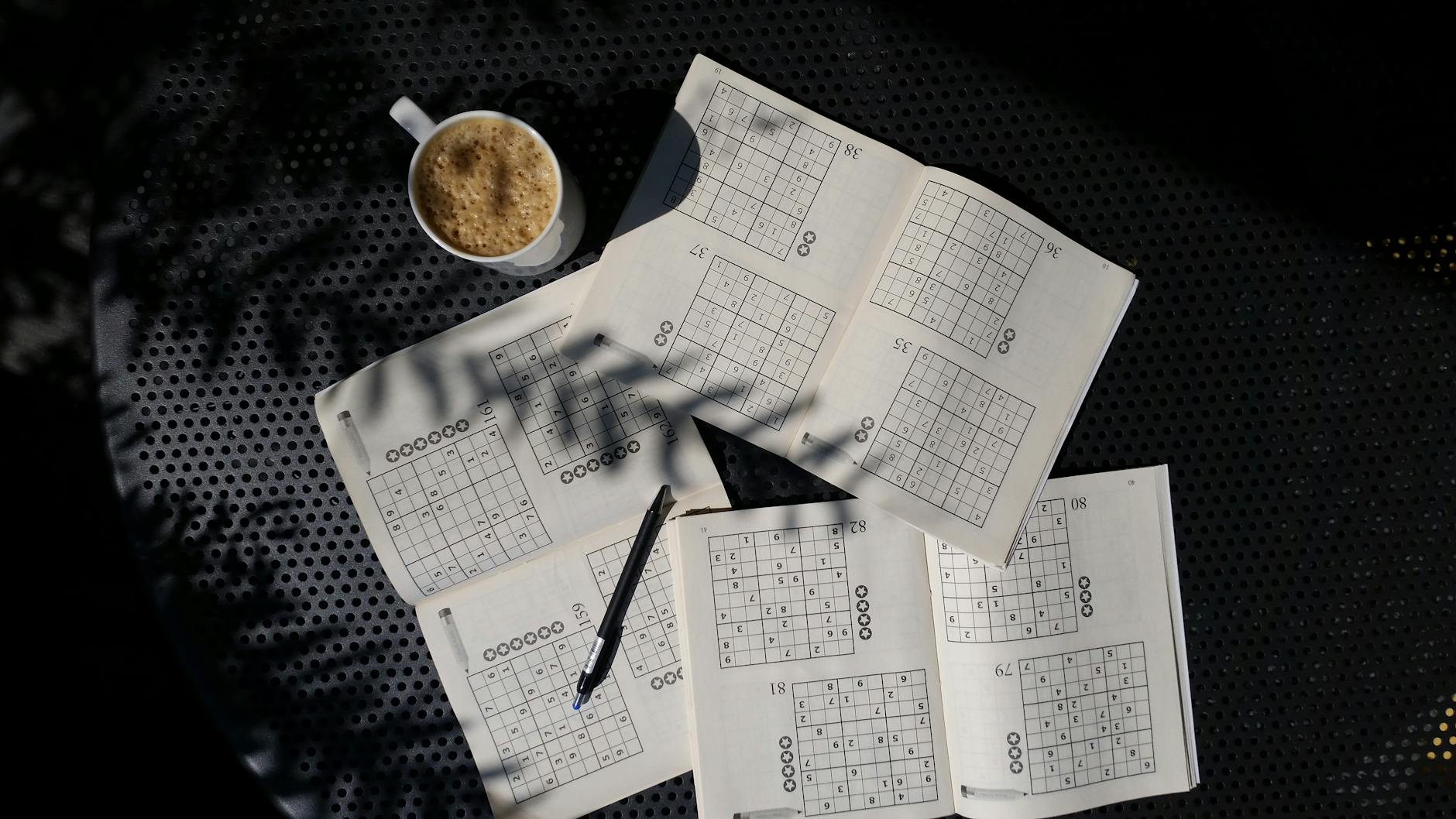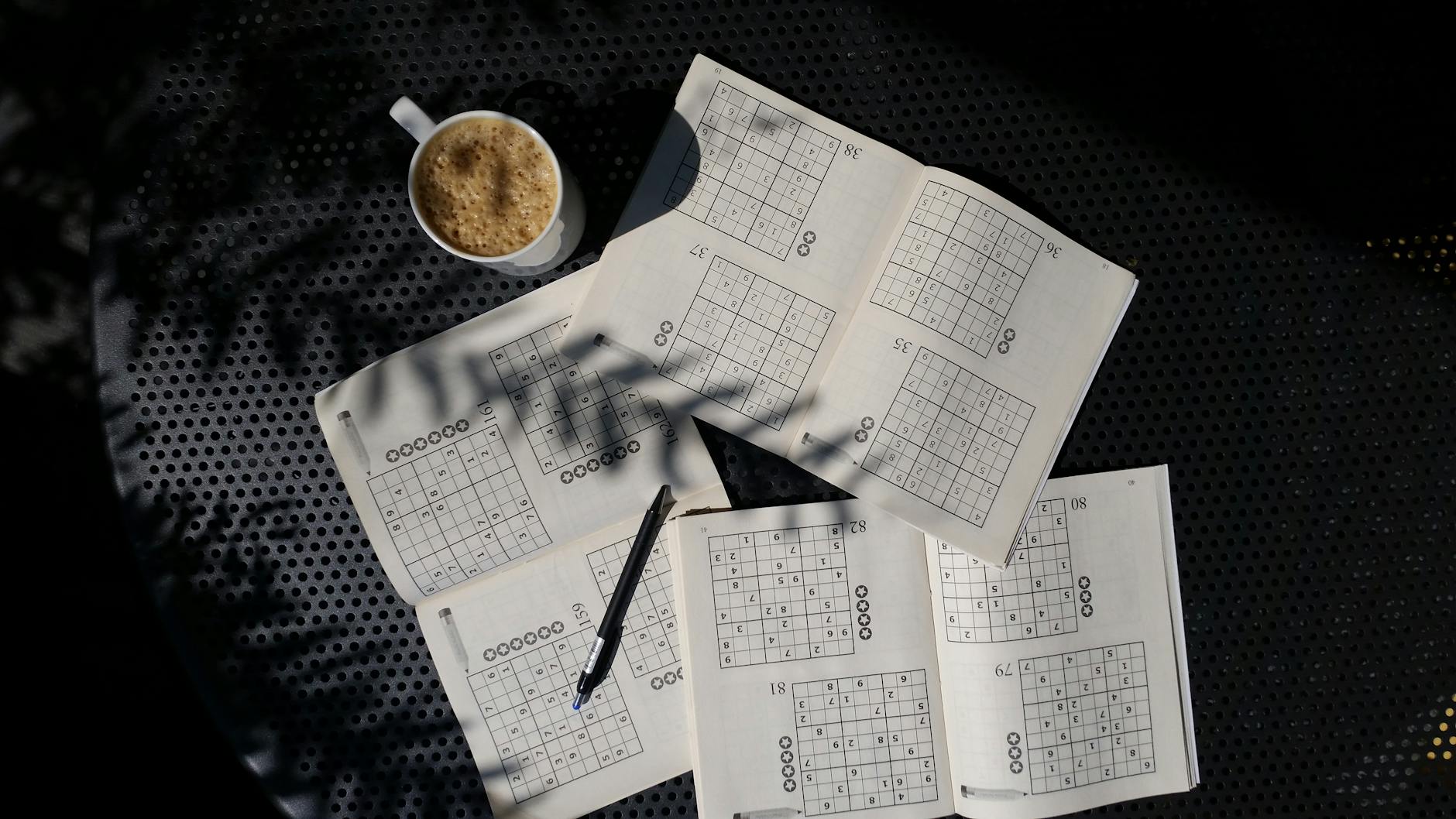7 Sudoku Secrets Every Beginner Needs to Solve Puzzles Faster
Sudoku Secrets for Beginners : 7 Secrets Every Beginner Needs to Solve Puzzles Faster

Are you tired of staring at Sudoku puzzles, feeling overwhelmed and frustrated? 🧩😣 You’re not alone! Many beginners struggle with this captivating number game, often believing that success comes down to luck. But here’s the truth: mastering Sudoku is all about strategy, not chance.
Imagine the satisfaction of confidently tackling any Sudoku grid, your mind sharp and focused as you effortlessly fill in the blanks. 🧠💪 This isn’t just a pipe dream—it’s a skill you can develop with the right techniques. Sudoku isn’t just a game; it’s a workout for your brain, offering cognitive benefits that extend far beyond the puzzle itself.
In this guide, we’ll unveil 7 secrets every beginner needs to solve Sudoku puzzles faster. From essential scanning techniques to advanced problem-solving approaches, we’ll equip you with the tools to transform your Sudoku experience. Get ready to discover the art of cross-hatching, the power of pencil marking, and the magic of spotting hidden patterns. By the end of this post, you’ll be well on your way to becoming a Sudoku master!
Understanding Sudoku Basics

A. Grid structure and rules
Sudoku is a captivating logic-based puzzle that has gained immense popularity worldwide. At its core, Sudoku revolves around a 9×9 grid, which serves as the foundation for this engaging numbers game. Understanding the grid structure and rules is crucial for anyone looking to master Sudoku.
The 9×9 grid is divided into nine distinct 3×3 subgrids, often referred to as boxes or blocks. This structure creates a total of 81 cells, each of which must be filled with a digit from 1 to 9. The challenge lies in adhering to the fundamental rules while completing the puzzle.
Let’s delve deeper into the rules that govern Sudoku:
- Unique digits in rows: Each row of the 9×9 grid must contain all digits from 1 to 9 without any repetition.
- Unique digits in columns: Similarly, each column must include all digits from 1 to 9 without any duplicates.
- Unique digits in 3×3 boxes: Every 3×3 subgrid must contain all digits from 1 to 9 exactly once.
These three rules form the backbone of Sudoku and must be followed simultaneously to successfully solve a puzzle. It’s important to note that the difficulty of a Sudoku puzzle is often determined by the number of pre-filled cells. Generally, fewer pre-filled numbers indicate a more challenging puzzle.
To illustrate the grid structure, let’s consider a simplified example using a 4×4 Sudoku grid:
| 1 | 2 | 3 | 4 |
|---|---|---|---|
| 3 | 4 | 1 | 2 |
| 2 | 1 | 4 | 3 |
| 4 | 3 | 2 | 1 |
In this example, you can observe that each row, column, and 2×2 subgrid contains the digits 1 through 4 exactly once. This principle extends to the standard 9×9 Sudoku grid, where the numbers 1 through 9 must be used.
When approaching a Sudoku puzzle, it’s essential to:
- Analyze the given numbers
- Apply elimination techniques
- Mark candidate numbers (also known as pencil marking)
- Fill in obvious cells
- Continuously reevaluate the grid
These steps form the basis of solving strategies and will be explored in more detail in subsequent sections of this blog post.
For beginners, it’s crucial to avoid common mistakes such as:
- Rushing placements without proper analysis
- Guessing numbers instead of using logical deduction
- Neglecting to use pencil marks for potential candidates
- Losing sight of the overall grid structure
- Skipping the verification process after filling in numbers
By understanding and respecting the grid structure and rules, you lay a solid foundation for developing your Sudoku-solving skills. Remember, Sudoku is not a game of chance but rather a test of logical thinking and pattern recognition.
B. Cognitive benefits of playing Sudoku
Sudoku is more than just a entertaining pastime; it offers a myriad of cognitive benefits that contribute to mental well-being and intellectual growth. As you engage with this logic-based puzzle, you’re essentially giving your brain a comprehensive workout. Let’s explore the various cognitive advantages that regular Sudoku practice can provide:
- Enhanced logical thinking:
Sudoku challenges you to use deductive reasoning and elimination techniques to solve puzzles. This constant exercise in logic strengthens your ability to think critically and make sound decisions based on available information. - Improved problem-solving skills:
Each Sudoku grid presents a unique problem that requires a systematic approach to solve. As you tackle increasingly difficult puzzles, you develop and refine your problem-solving strategies, which can be applied to real-life situations. - Increased concentration and focus:
Solving Sudoku requires sustained attention to detail. Regular practice can enhance your ability to concentrate for extended periods, a skill that is valuable in many aspects of life, including work and study. - Better memory and cognitive reserve:
As you remember and apply various solving techniques, you exercise your memory. Additionally, the mental stimulation provided by Sudoku may help build cognitive reserve, potentially reducing the risk of age-related cognitive decline. - Pattern recognition skills:
Sudoku is fundamentally a game of recognizing and manipulating number patterns. This repeated exposure to pattern identification can improve your overall pattern recognition abilities, which are useful in many fields, from mathematics to data analysis. - Time management and patience:
Learning to solve Sudoku efficiently requires developing a sense of timing and patience. You learn to balance the need for quick decision-making with the importance of careful consideration, a skill that translates well to many real-world scenarios. - Stress relief and mental relaxation:
Despite its challenging nature, many people find Sudoku to be a relaxing activity. The focused nature of the puzzle can help take your mind off stressors, providing a form of mental relaxation. - Improved number sense:
While Sudoku is not explicitly about mathematical calculations, regular exposure to number arrangements can enhance your overall comfort and familiarity with numbers. - Boost in self-confidence:
Successfully completing Sudoku puzzles, especially as you progress to more difficult levels, can provide a sense of achievement and boost self-confidence. - Enhanced visual-spatial awareness:
Working with the Sudoku grid helps improve your ability to process and manipulate visual information, enhancing overall visual-spatial awareness.
To illustrate the cognitive areas that Sudoku primarily engages, consider the following table:
| Cognitive Area | How Sudoku Engages It |
|---|---|
| Logic | Deductive reasoning, elimination techniques |
| Problem-solving | Systematic approach to grid completion |
| Concentration | Sustained focus on puzzle details |
| Memory | Recalling and applying solving techniques |
| Pattern Recognition | Identifying number arrangements and relationships |
| Time Management | Balancing speed and accuracy in puzzle-solving |
| Visual-spatial Processing | Manipulating numbers within the grid structure |
It’s important to note that while these cognitive benefits are widely recognized, the extent of improvement can vary from person to person. Consistent practice and gradually increasing the difficulty of puzzles you attempt can help maximize these cognitive advantages.
Moreover, the accessibility of Sudoku – available in newspapers, books, and various online platforms – makes it a convenient option for regular mental exercise. Whether you’re looking to sharpen your mind during a commute or as part of a daily routine, Sudoku offers a flexible and engaging way to boost your cognitive functions.
C. Importance of strategy over luck
One of the most crucial aspects of Sudoku that beginners must understand is the paramount importance of strategy over luck. Unlike games of chance, Sudoku is a pure logic puzzle where success is determined by the player’s ability to apply systematic techniques and logical reasoning. Recognizing this fundamental principle is key to improving your Sudoku-solving skills and deriving maximum enjoyment from the game.
Here’s why strategy trumps luck in Sudoku:
- Logical consistency:
Sudoku puzzles are designed to be solved through logical deduction. Each number placement should be a result of careful analysis rather than random guessing. This logical consistency ensures that there is always a clear path to the solution, even if it’s not immediately apparent. - Guaranteed solvability:
Properly constructed Sudoku puzzles have only one unique solution. This means that if you follow logical strategies, you will always be able to solve the puzzle without resorting to guesswork. - Skill development:
Relying on strategy rather than luck allows you to develop and refine your problem-solving skills over time. As you learn and apply various techniques, you’ll become more proficient at tackling increasingly difficult puzzles. - Efficient solving:
Strategic approaches lead to more efficient solving. By using techniques like scanning, cross-hatching, and candidate elimination, you can systematically narrow down possibilities and fill in numbers with confidence. - Reduced frustration:
Guessing can lead to errors that may not be apparent until much later in the puzzle, causing frustration and wasted time. Strategic solving minimizes these issues, making the experience more enjoyable. - Deeper understanding:
By focusing on strategy, you gain a deeper understanding of the puzzle’s structure and the relationships between numbers. This insight enhances your overall Sudoku experience and accelerates your learning curve. - Applicability to variations:
The strategic thinking developed through standard Sudoku can be applied to various Sudoku variations, such as Killer Sudoku or Diagonal Sudoku, expanding your puzzle-solving repertoire.
To emphasize the difference between strategic solving and relying on luck, consider the following comparison:
| Aspect | Strategic Approach | Luck-Based Approach |
|---|---|---|
| Consistency | Produces reliable results | Inconsistent outcomes |
| Time Efficiency | Generally faster solving times | Can lead to time-consuming errors |
| Skill Improvement | Steady progress in abilities | Limited long-term improvement |
| Puzzle Difficulty | Can tackle increasing difficulties | Struggles with harder puzzles |
| Error Detection | Easier to identify and correct mistakes | Difficult to pinpoint errors |
| Satisfaction | Higher sense of achievement | Less fulfilling victories |
| Applicability | Skills transfer to other logic puzzles | Limited to simple guessing games |
To develop a strategic approach to Sudoku, consider the following tips:
- Start with easier puzzles:
Begin with simpler Sudoku grids to learn and practice basic strategies without feeling overwhelmed. - Use pencil marks:
Employ pencil marking to keep track of potential candidates for each cell. This technique is crucial for more advanced solving methods. - Learn and apply various techniques:
Familiarize yourself with strategies such as scanning, cross-hatching, and hidden singles. Apply these methods systematically as you solve. - Avoid guessing:
Resist the temptation to guess numbers. If you’re unsure about a cell, move on and return to it later with fresh eyes. - Practice regularly:
Consistent practice helps reinforce strategic thinking and improves your ability to recognize patterns and opportunities within the grid. - Analyze your mistakes:
When you make an error, take the time to understand why it occurred and how you can avoid similar mistakes in the future. - Gradually increase difficulty:
As your skills improve, challenge yourself with more difficult puzzles to continue developing your strategic abilities. - Learn from resources:
Utilize Sudoku books, online tutorials, and community forums to learn new strategies and tips from experienced players.
By embracing a strategy-focused approach to Sudoku, you’ll not only improve your solving skills but also gain a deeper appreciation for the puzzle’s elegance and complexity. Remember, every Sudoku grid, no matter how challenging, can be conquered through logical deduction and strategic thinking.
As we conclude our exploration of Sudoku basics, including the grid structure, rules, cognitive benefits, and the importance of strategy, we’ve laid a solid foundation for your Sudoku journey. With this knowledge in mind, we’re ready to delve into more specific techniques that will enhance your solving abilities. In the next section, “Essential Scanning Techniques,” we’ll explore fundamental methods that will help you identify opportunities within the Sudoku grid more efficiently, further developing your strategic approach to this captivating puzzle game.







